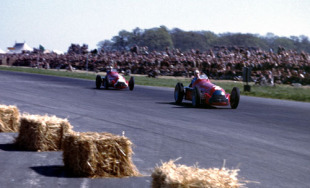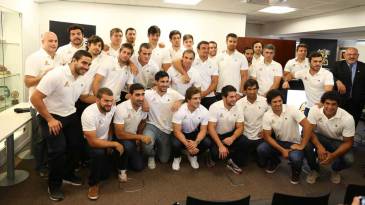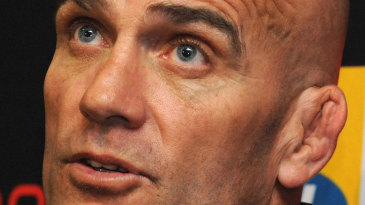
- Race:
- British Grand Prix
- Championship:
- FIA Formula One World Championship
- Drivers:
- Luigi Fagioli
- |
- Juan Manuel Fangio
- |
- Reg Parnell
- Teams:
- Alfa Romeo
The Formula One World Championship began on a hot Saturday in May in the presence of King George VI, Queen Elizabeth, Princess Margaret, plus the Earl and Lady Mountbatten of Burma at Silverstone. More than 120,000 spectators turned up at the Northamptonshire airfield to watch a race round a circuit bordered by straw bales and oil drums filled with concrete.
Officially called the Grand Prix d'Europe and the fifth race of the summer, it was dominated throughout, as widely predicted, by Alfa Romeo. The Italian constructor sent four of their 158 chassis and it was Giuseppe Farina who qualified on pole position against opposition from his team-mates, a brace of French Talbot Lagos and locally-built ERAs and Altas.
Farina led away, chased by his team-mates Luigi Fagioli and Juan Manuel Fangio. The trio swapped places over the early laps, each driver taking a turn at the front but never threatened by the opposition which was already fading away. Fangio retired with an engine failure and that allowed Farini and Fagioli to fight it out at the head of the field.
Farina took the win, just over two seconds clear of his team-mate who had spun on oil near the end to all but end his chances, while third fell to British driver Reg Parnell who was also works Alfa-mounted. Parnell, who had been drafted into the team for this one race, was almost a minute back, his only drama coming when he hit a hare that had made a bid for freedom at the wrong moment.
A clear indication of the domination of the Alfa Romeo team was the margin between its three cars and the fourth-placed Talbot-Lago of Yves Giraud-Cabantous which trailed home two laps adrift of the Italian cars. Fifth was the second Talbot of Louis Rossier, while Bob Gerrard brought his angular pre-war built ERA home sixth, a further lap behind.
Of the 21 cars that started, 11 made it to the flag with a mixture of pre and post-war cars. Some spectators were disappointed that Alfa Romeo had been so dominant, but the World Championship had begun and motor racing was back on the radar.
As for the newspapers, coverage was enthusiastic but not remotely on the scale it was to become, and the media were far from happy about the toilets, which were "nothing short of disgusting".
Martin Williamson is managing editor of digital media ESPN EMEA
© ESPN Sports Media Ltd.
 Martin Williamson is managing editor of digital media ESPN EMEA Martin Williamson, who grew up in the era of James Hunt, Niki Lauda and sideburns, became managing editor of ESPN EMEA Digital Group in 2007 after spells with Sky Sports, Sportal and Cricinfo
Martin Williamson is managing editor of digital media ESPN EMEA Martin Williamson, who grew up in the era of James Hunt, Niki Lauda and sideburns, became managing editor of ESPN EMEA Digital Group in 2007 after spells with Sky Sports, Sportal and Cricinfo

